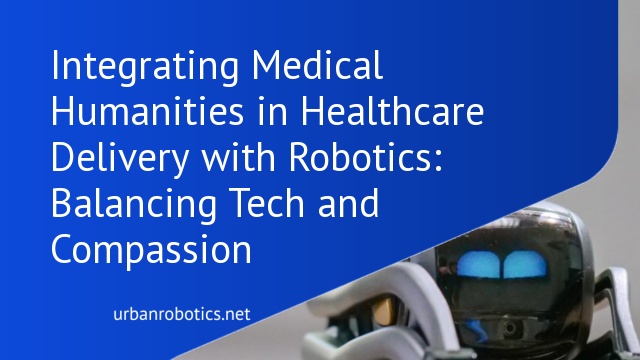Understanding Medical Humanities
We aim to highlight the role of medical humanities in enhancing healthcare delivery. This field bridges the gap between technology and human-centered care.
Definition and Scope
Medical humanities integrate disciplines like literature, ethics, history, and art into medical education and practice. These fields enrich healthcare professionals’ understanding of patient experiences. By exploring diverse perspectives, medical humanities encourage empathy, moral reflection, and a deeper appreciation for the human condition. This integration promotes a well-rounded approach to patient care, emphasizing holistic treatment and patient-centered practices.
Importance in Healthcare
Incorporating medical humanities in healthcare fosters empathy and enhances communication between providers and patients. It ensures that medical professionals not only focus on clinical outcomes but also on the emotional and psychological aspects of patient care. Studies show that patients who receive empathetic care experience improved satisfaction and better health outcomes. Thus, medical humanities play a crucial role in creating compassionate, effective, and holistic healthcare environments.
Integration of Robotics in Healthcare Delivery
Robotics plays a pivotal role in modern healthcare by enhancing precision and efficiency while maintaining compassionate patient care. This integration aligns technological advancements with medical humanities, leading to a holistic approach.
Types of Robotics in Healthcare
Various robotic systems serve distinct roles in healthcare:
- Surgical Robots – Systems like the da Vinci Surgical System assist in minimally invasive surgeries.
- Rehabilitation Robots – Devices such as exoskeletons aid in patient recovery post-surgery or injury.
- Service Robots – Robots like TUG robots transport medical supplies and linens within hospitals.
- Diagnostic Robots – Tools including robotic imaging devices improve accuracy in disease diagnosis.
- Companion Robots – Robots like PARO provide emotional support to patients, especially the elderly.
- Benefits:
- Precision: Enhanced accuracy in surgical procedures reduces risks and recovery times.
- Efficiency: Automating routine tasks allows medical staff to focus on patient care.
- Consistent Support: Robots provide unwavering assistance, unaffected by fatigue.
- Challenges:
- Cost: Initial investment and maintenance can be expensive.
- Training: Healthcare professionals need extensive training to operate advanced robotic systems.
- Ethical Concerns: Balancing robotic assistance with patient privacy and human touch remains crucial.
Intersection of Medical Humanities and Robotics
Medical humanities and robotics converge to create a compassionate, efficient healthcare system. This fusion ensures that while technology aids in precision, the human element of care remains integral.
Ethical Considerations
Ethical considerations in the intersection of medical humanities and robotics include patient privacy, consent, and the human touch in care. Automation in healthcare must align with ethical guidelines to protect patient information. Patient consent becomes crucial when robotic interventions are involved, ensuring autonomy is respected. Additionally, the disappearance of the human touch in caregiving raises concerns about empathy and warmth, which are core to medical humanities.
Human-Robot Interaction
Human-robot interaction is a pivotal area at this intersection, focusing on seamless, efficient communication and collaboration. Effective design of user-friendly interfaces fosters better patient acceptance and use of robotic systems. Training healthcare professionals to work alongside robots enhances this interaction, ensuring that technology complements rather than replaces the human element. Ensuring clear, empathetic communication between robots and patients supports the values of medical humanities.
Case Studies and Real-World Applications
Robotics in healthcare has shown significant potential in real-world scenarios, with numerous case studies highlighting successful implementations and lessons learned.
Successful Implementations
Several hospitals have integrated robotic-assisted surgery to enhance precision and reduce recovery times for patients. For instance, the Da Vinci Surgical System has been used in over 3 million surgeries worldwide, demonstrating its effectiveness in minimally invasive procedures. Rehabilitation centers have also adopted robotic exoskeletons, like the EksoGT, to assist patients in regaining mobility faster than traditional methods.
Lessons Learned
While integrating robotics in healthcare, we’ve encountered several valuable insights. Training healthcare professionals is crucial for maximizing the technology’s benefits. For instance, adequate training ensures that surgical robots are used effectively. Additionally, addressing patients’ emotional and psychological responses to robotic care has proven essential, highlighting the need for balancing technological precision with empathetic human interaction.
Future Prospects and Innovations
Emerging Technologies
Several new technologies are set to revolutionize healthcare delivery with robotics. Advances in artificial intelligence (AI) enhance the decision-making capabilities of surgical robots, making procedures safer. Developments in nanorobotics offer promising applications in targeted drug delivery, potentially increasing treatment efficacy. Wearable robotics improve rehabilitation outcomes by providing tailored physical therapy. These innovations push the boundaries of what’s possible, integrating seamlessly into our healthcare systems.
Potential Impact on Patient Care
These advancements significantly impact patient care. AI-driven diagnostics reduce error rates, leading to faster, more accurate treatment plans. Nanorobotics target diseased cells directly, minimizing side effects and improving patient outcomes. Wearable exoskeletons assist patients in regaining mobility, leading to faster recovery times. By incorporating these technologies, we create a healthcare environment that combines precision, efficiency, and compassionate care.
Conclusion
The integration of robotics in healthcare marks a transformative era, blending cutting-edge technology with the principles of medical humanities. This fusion ensures that while we achieve unprecedented precision and efficiency, we don’t lose sight of the compassionate care central to patient well-being.
Balancing the benefits and challenges of robotics involves careful consideration of ethical issues, rigorous training, and maintaining the human touch. As we continue to innovate with AI-driven diagnostics and advanced robotic systems, our goal remains clear: to create a healthcare environment that is both technologically advanced and deeply humane.
By embracing these advancements thoughtfully, we can build a future where healthcare delivery is not only efficient and precise but also profoundly compassionate and patient-centered.





